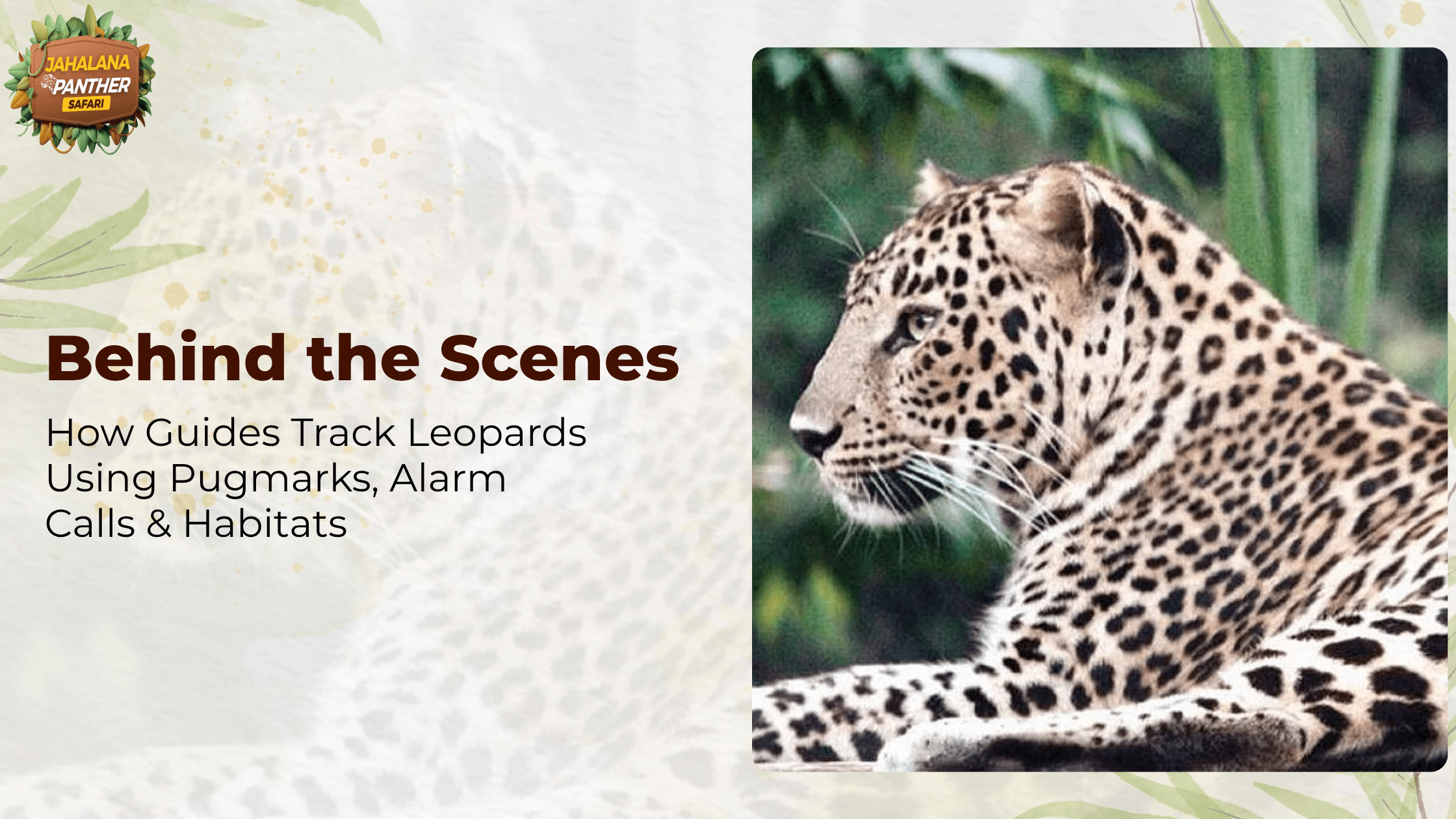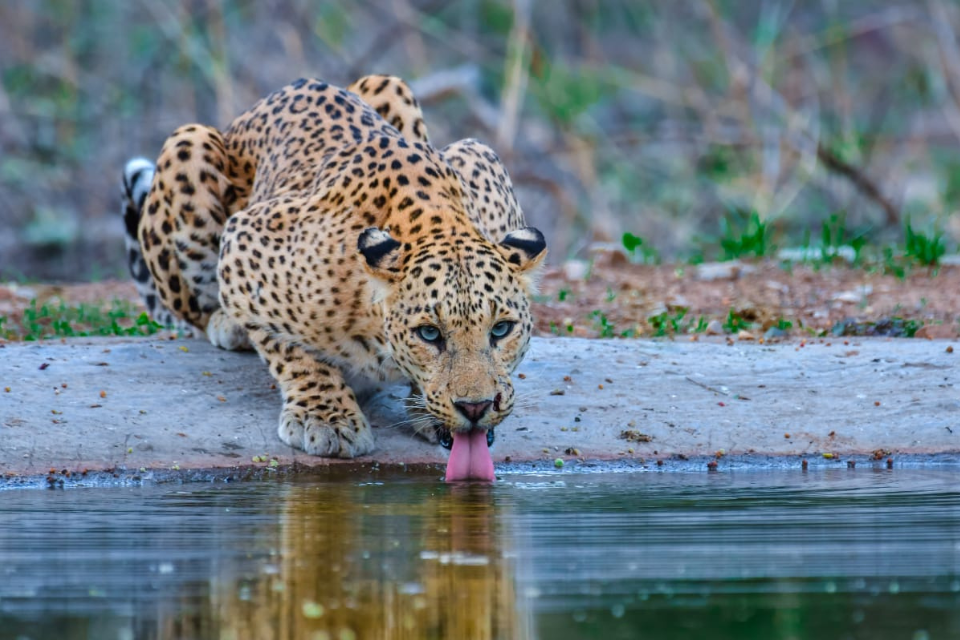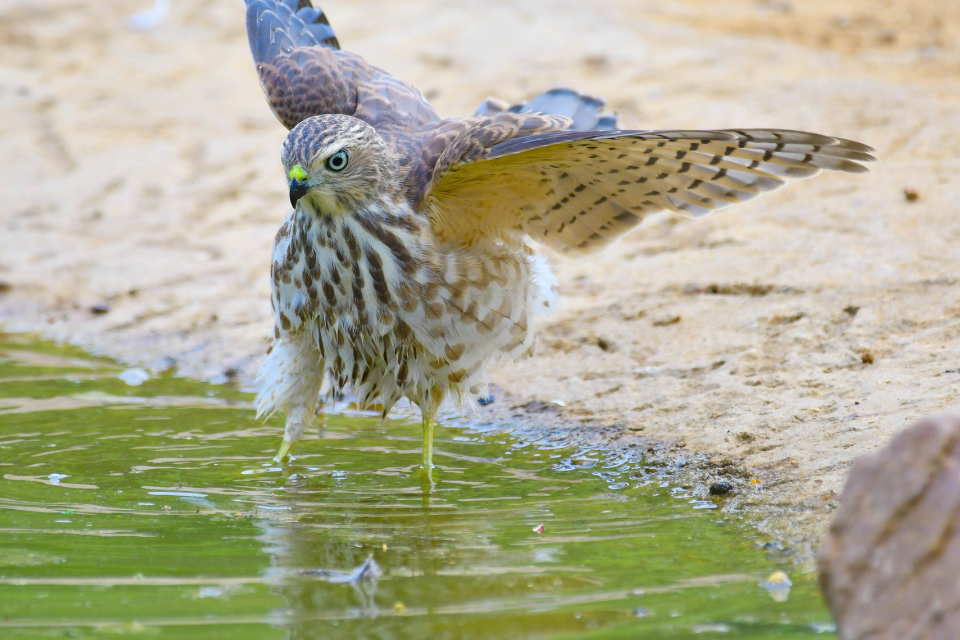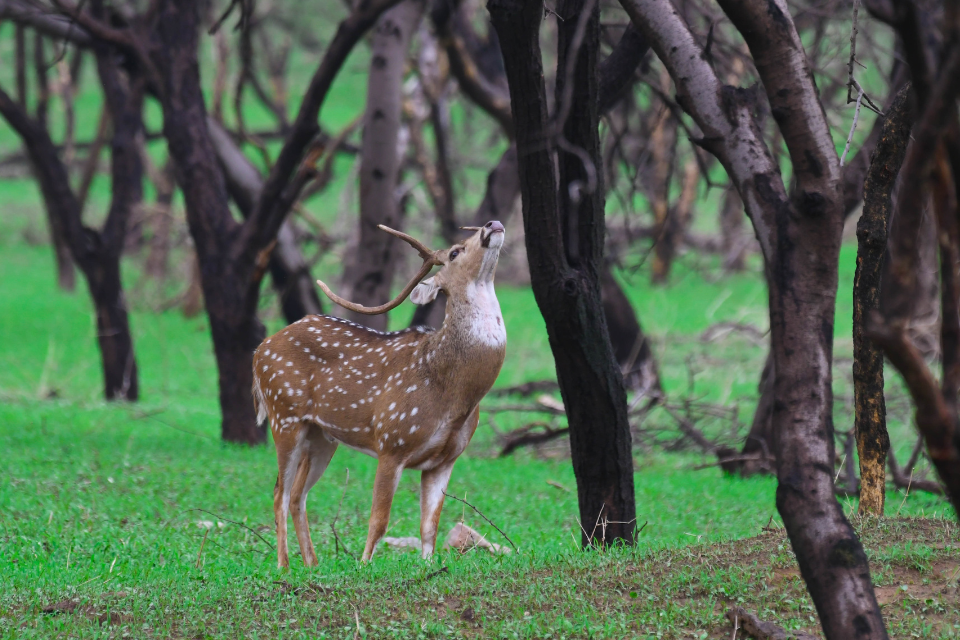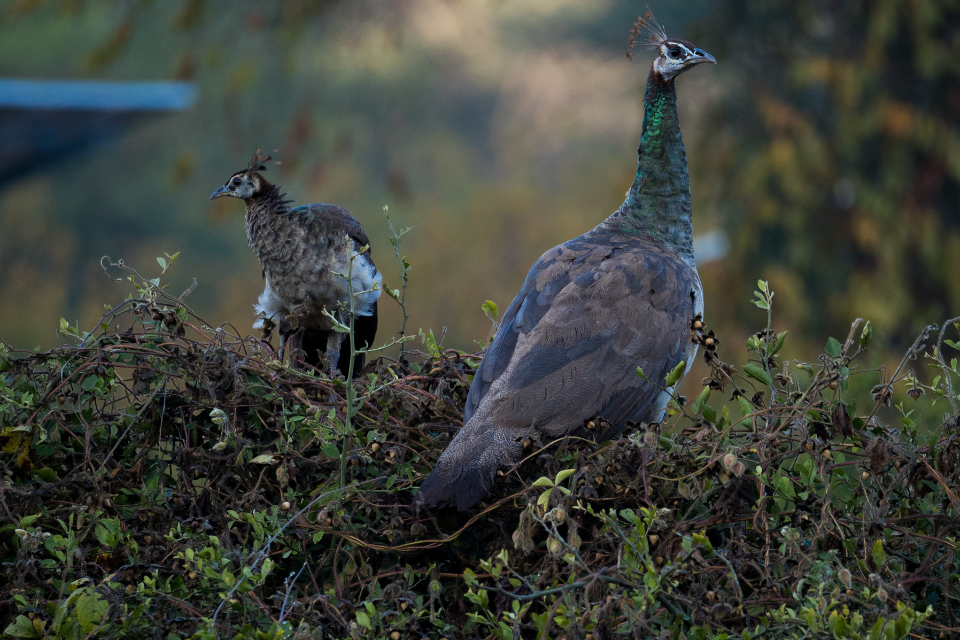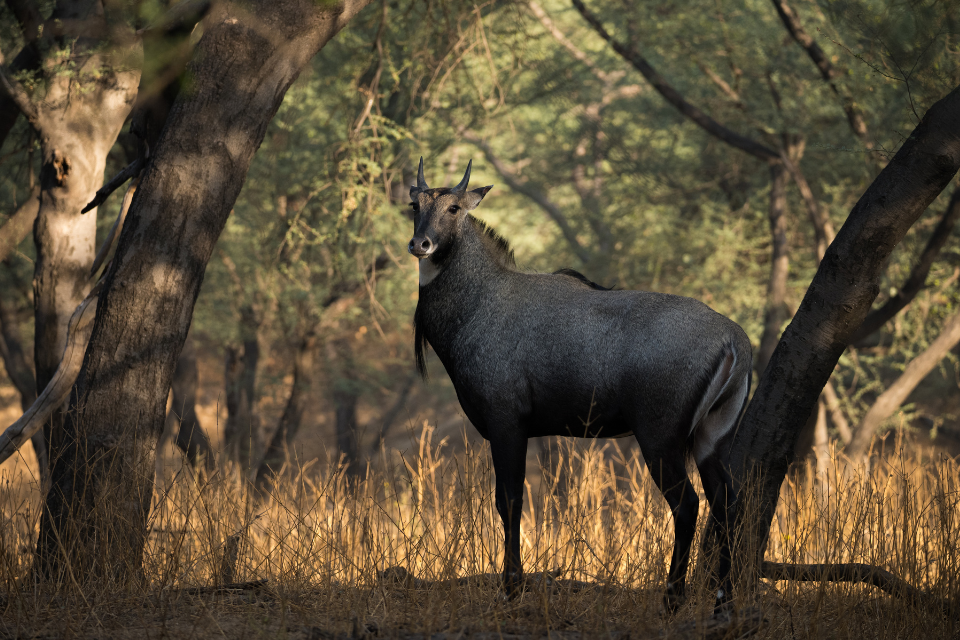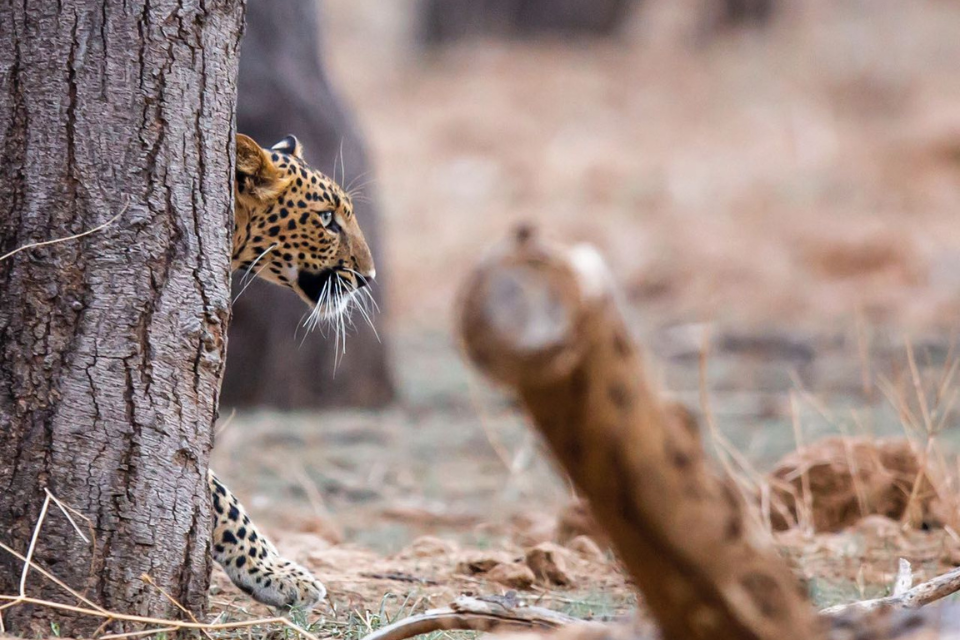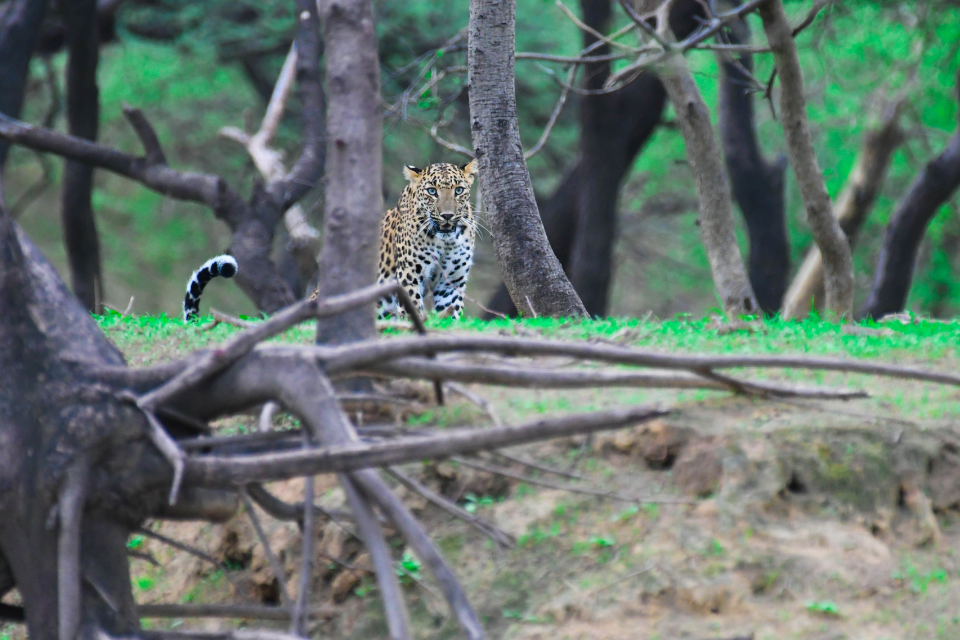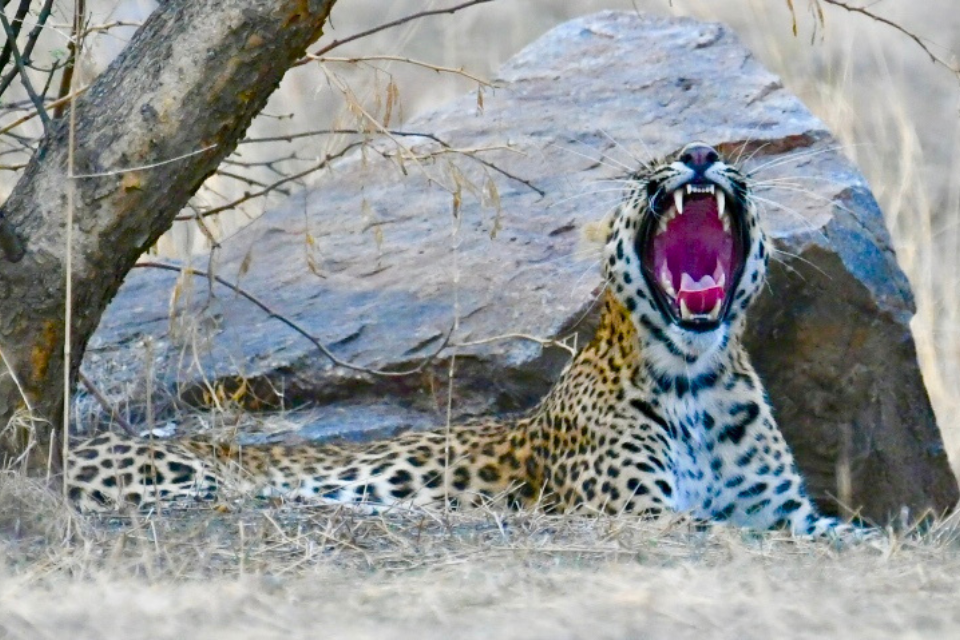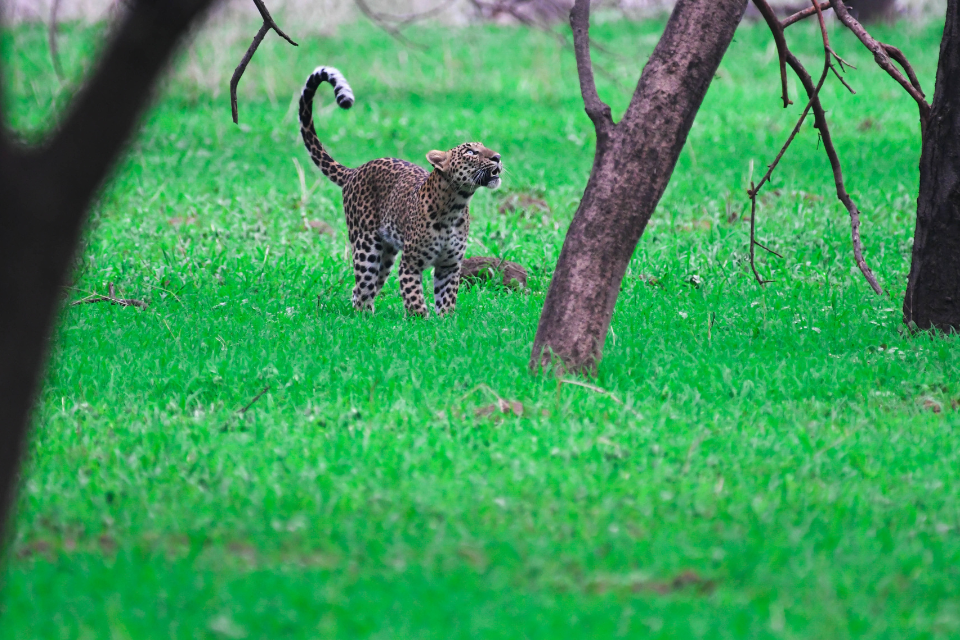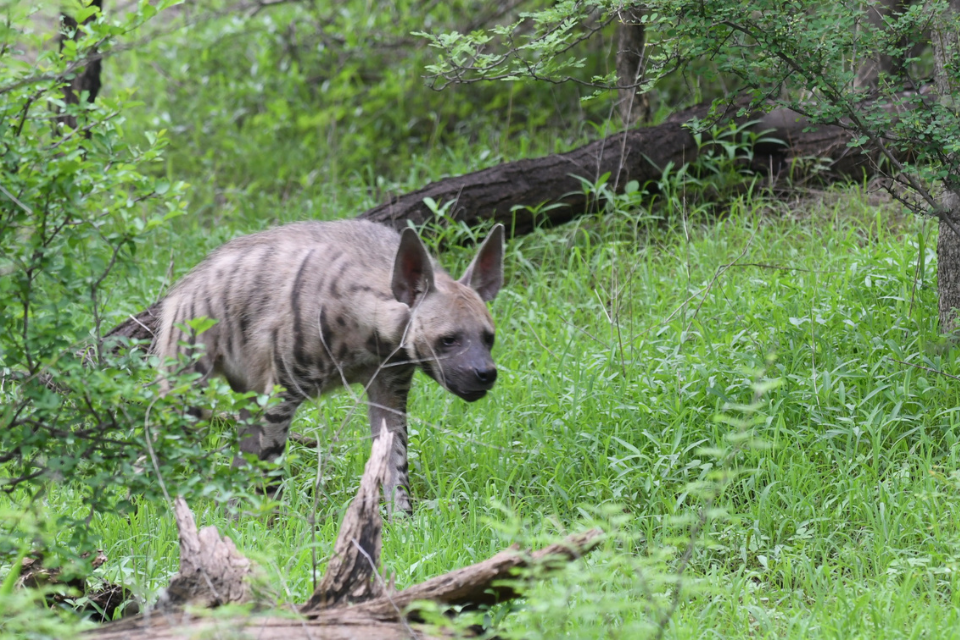- October 14, 2025
Behind the Scenes: How Guides Track Leopards Using Pugmarks, Alarm Calls & Habitats
A Dawn Whisper in the Bush: What You Don’t See on Safari
Tyres crunch softly over gravel as dawn thins the night. Somewhere ahead, a langur’s clipped bark ricochets across the scrub. Your guide lifts a hand: the vehicle rolls to a hush. On the track’s edge—an oval pad with three clear lobes on the back edge—a fresh imprint glistens where dew has darkened the dust. “Leopard,” your guide murmurs. You lean closer. The jungle seems to exhale.
What follows isn’t luck. It’s fieldcraft: a disciplined blend of sign-reading (pugmarks), acoustic triangulation (alarm calls), and habitat interpretation that guides around Jaipur (and across India) use to find the subcontinent’s most elusive cat—without broadcasting sensitive locations or relying on invasive tracking tech.
This story-driven explainer opens the curtain on the skills, routines, and ethics our team lives by—so you’ll know exactly what’s going on when your guide suddenly changes direction, stops to sniff the wind, or becomes fascinated by a smudge in the dust.
Why Fieldcraft Still Matters (and Builds Real E-E-A-T)
In an age of gadgets, time-tested fieldcraft remains king for leopard work. Leopards are secretive, adaptive, and mostly nocturnal; they slip through edges of scrub and settlement with ghostlike ease. Our approach emphasizes:
- Experience: Years of seasons—dry, monsoon, post-monsoon—teach how sign looks as conditions change.
- Expertise: Knowing what to read (shape, stride, substrate) and what to ignore (noise, old spoor).
- Authority: Meticulous logs of sightings, call sequences, weather, moon phase, and prey movements.
- Trust: We never publish or transmit sensitive den sites, kill caches, or precise coordinates.
The result? Ethical, non-invasive leopard tracking that respects the cat, protects habitats, and still gives guests a gripping, educational encounter.
The Tracking “Triad”: Pugmarks, Alarm Calls & Habitats
Think of leopard tracking as a three-legged stool:
- Pugmarks: The literal footprint—age, direction, speed, and mood cues.
- Alarm Calls: A live “radio” of the forest—langur, sambar, peafowl, and more.
- Habitats: Where a leopard is likely to be, when, and why—edges, water, cover, and wind.
Strong tracking leans on all three, cross-checking each to avoid false leads and to reduce disturbance.
Pugmarks: Reading the Leopard’s Signature
Pugmarks—the impressions cats leave in soil, sand, or dust—are surprisingly information-dense. Good guides treat each track like a short story.
Leopard vs. Other Tracks (at a glance)
- Dog vs. leopard: Dog tracks usually show claws; leopard tracks almost never do.
- Tiger vs. leopard: Tigers are larger; a tiger’s hind pad is broader with more massive toes. Leopards are smaller, and front tracks (supporting forelimb) are typically wider than hind.
- Hyena vs. leopard: Hyena tracks look more oval with visible claws and a different toe arrangement.
Key Anatomy of a Leopard Track
- Overall shape: Roundish.
- Toes: Four toes ahead of the pad, asymmetrical; inner two often align differently than outer two.
- Hind pad (metacarpal): Three lobes on the posterior edge; the central lobe is usually prominent.
- Negative space: The voids between toes and pad form patterns experienced guides learn to “read” instinctively.
What Tracks Tell Us
- Direction & Route Choice: A string of pugmarks (“trail”) reveals travel direction—watch for toe orientation and the linear progression of impressions.
- Gait & Pace:
- Walk: Even spacing; hind foot often lands close to where front foot was (“direct register”).
- Trot/lope: Longer stride; deeper toe impressions.
- Stalk: Short, careful steps; more toe pressure, pad placement close to cover.
- Freshness (Aging a Track):
- Fresh: Crisp edges; undisturbed dew displaced recently; insect traffic not yet across.
- A few hours: Edges soften; dust begins to slough; tiny debris settles into the imprint.
- Old: Wind-eroded, collapsed edges; overlapping tracks of other animals.
- Substrate Clues:
- Dust/sand: Best definition; check micro-ridges on edges.
- Clay: Smears may obscure detail; look for pad depth.
- Gravel: Intermittent sign—confirm with secondary cues (drag, tail brush, scuffs).
Practical Field Moves
- Shadow and Angle: Guides crouch and let low light rake across the surface; oblique lighting reveals relief.
- Track Circles: When a fresh track veers into scrub, we draw a wide, quiet arc to intersect the line again rather than push straight in.
- Spoor Traps: Sandy bends, culverts, and road margins serve as natural “traps” where animals unconsciously leave legible sign.
Pro tip for guests: When your guide asks for “no talking” or reduced movement near sign, it’s to preserve audio cues and avoid trampling fresh spoor.
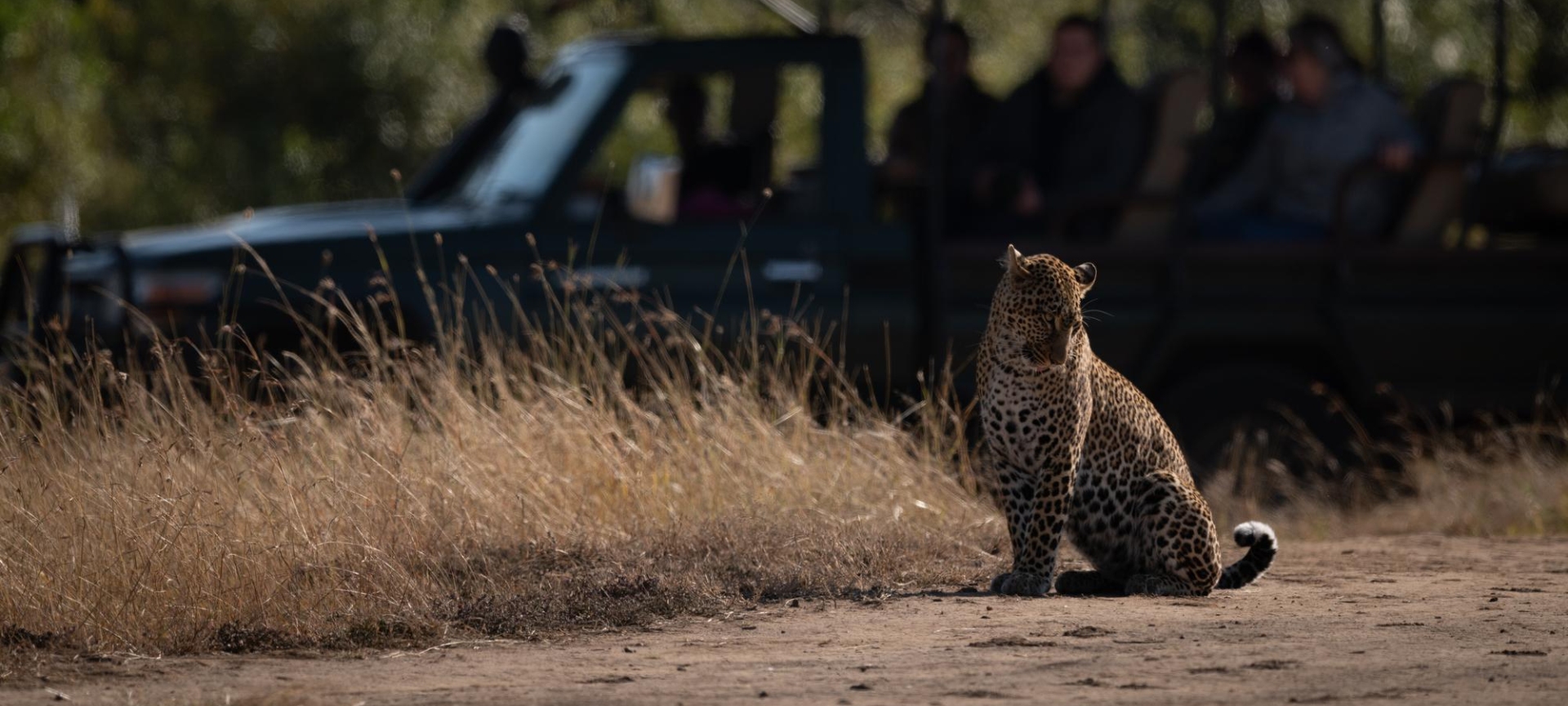
Alarm Calls: The Forest’s Live Newsfeed
Leopards move silently. Their presence is often betrayed by prey and sentinel species: each with a distinctive alarm lexicon.
Common Alarm Callers & What They Mean
- Gray Langur: Explosive barks/“khok” from treetops. Langurs visually track predators and offer directional intel—if calls shift along a canopy line, something is moving.
- Sambar & Chital (Deer): Deep, resonant barks; sustained calls often mean a predator is stationary or stalking nearby.
- Peafowl: Sharp ke-ik notes; good for indicating movement through scrub or along field edges.
- Nilgai & Wild Boar: Less frequent but distinctive snorts or grunt-bursts; listen for sudden group agitation.
- Small Birds (Drongos, Babblers): A chorus of scolds can expose a leopard on a tree or in hedgerow cover.
Interpreting Patterns
- Single burst vs. sustained chain: A single peafowl scream could be a false positive; a chain of deer barks in a consistent direction is more actionable.
- Triangulation: If langurs call on a ridge while peafowl call in a parallel ravine, the predator may be between these lines.
- Decay Over Time: Calls often fade as animals habituate or as the predator moves—guides constantly reassess rather than chase a stale trail.
Filtering False Positives
Wind, domestic dogs, or even human movement can set off alarms. Experienced guides cross-check with fresh tracks, wind direction, and habitat suitability before committing.
Habitat Reading: Where & Why Leopards Choose Space
Leopards love edges—the seam where two habitats meet. Near Jaipur, think rocky outcrops, scrub forests, ravines, water edges, and village boundaries (which attract feral dogs and livestock, i.e., potential scavenging).
Micro-Habitat Preferences
- Rocky Escarpments & Ledges: Ideal day beds: shade, airflow, and watchpoints.
- Scrub-Grass Mosaic: Excellent for ambush; look for game trails threading cover.
- Water Proximity: In warm months, activity concentrates near waterholes at dawn/dusk.
- Livestock Corridors (Edges): Draw prey species and scavenging opportunities—guides keep ethical distance and avoid disturbance.
Temporal Patterns (When Matters)
- Dawn/Dusk (Crepuscular Peaks): Best for movement.
- Post-rain Cooldowns: Fresh scents and soft ground favor travel; tracks are crisp.
- Full Moon vs. Dark Nights: Moonlight can extend foraging; on darker nights, leopards may keep closer to cover.
Wind, Sun, and Human Pressure
- Wind: Leopards quarter into wind to scent; guides position downwind to avoid detection.
- Shade Lines: Midday heat pushes cats to north-facing rocks or breezy saddles.
Human Noise: Weekend crowding can displace activity to quieter pockets—knowing these refuge zones is part of local expertise.
A Morning Play-by-Play: How a Guide Makes the Call
- Pre-Light Recon: Check sandy “spoor traps” near junctions. Fresh leopard tracks cross the main track, dew displaced—likely within the hour.
- Alarm Call #1: A langur bark breaks east, midway up a ridge. Guide marks mental map: probable movement from south to east.
- Confirming Sign: Fifty meters on, a second set of pugmarks (smaller) joins—could be a subadult or female; pace looks steady.
- Alarm Call #2: Peafowl along the ravine give two bursts, spaced a minute apart—suggests progress along the ravine edge.
- Wind Check: Breeze from east to west; guide chooses a downwind loop to a rocky saddle that overlooks the ravine—classic day-bed spot.
- Silence Protocol: Vehicle off. Guests still. Ears open. A sambar’s deep bark rolls up from below—one, then two.
- Visual: A tail flick between boulders—rosettes resolve in shade. The guide keeps distance, no crowding, short engine bursts only when repositioning for brief, ethical views. No calls, no bait, no playback—just patience.
This isn’t magic. It’s repeatable methodology, tempered by restraint.
Tools We Use (and Don’t)
- Use: Binoculars, thermal monoculars for presence/heat blobs (not for pursuit), red-light torches to protect night vision, notebooks for call sequences, and camera traps in permitted zones for passive monitoring.
- Avoid: Publicly sharing live pins, approaching dens or fresh kills, baiting, playback, or aggressive off-track driving. Our no-GPS-sharing policy protects leopards from disturbance and misuse.
Ethics & Safety: The Non-Negotiables
- Animal First: If alarm calls suggest a chase or a female with cubs, we back off.
- Distance & Angle: We prioritize clear angles at respectful distances over “closer” views.
- Noise & Light: Engines idled, radios low, no flash at close range.
- Track Hygiene: Don’t trample fresh sign; it’s the forest’s “data”.
- Guided Only: Never follow cats on foot without professional authorization and permissions.
For Visitors: How to Improve Your Chances (Responsibly)
- Timing: Book first or last light drives; mid-day is for landscapes and birding.
- Clothing: Earth tones; avoid rustling fabrics.
- Behavior: Keep voices soft; follow “quiet windows” when your guide signals.
- Gear: Binoculars; a telephoto lens (300mm+); patience (the most important).
- Mindset: You’re here to witness, not to win. Sometimes the best sighting is a story told by the forest—calls, tracks, and a whisker glimpse that leaves the cat undisturbed.
FAQs
Q1: How do guides near Jaipur track leopards without GPS?
By combining fresh pugmarks, real-time alarm calls, and habitat likelihoods—then moving quietly and strategically based on wind and cover. This triad yields reliable, ethical encounters.
Q2: How can you tell a leopard track from a dog’s?
Leopard tracks are round, clawless, with a distinct tri-lobed rear pad. Dogs usually show claw marks and a more oval shape.
Q3: Do alarm calls always mean a leopard is present?
No. They can signal other predators or disturbances. Guides triangulate multiple calls and cross-check with fresh sign before acting.
Q4: Is monsoon tracking harder?
Yes. Rain smears tracks and dampens sound. But soft ground can also make fresh spoor more readable between showers. Guides adjust tactics and lean more on habitat reading.
Q5: What’s the best time for leopard activity?
Dawn and dusk, with variations from season to season. In warmer periods, proximity to water and breezy rocks improves odds.
Q6: Is it safe to track leopards?
With experienced guides and park protocols, yes. We maintain distance, avoid sensitive sites, and never pursue on foot in risky terrain.
Q7: Why not share exact locations after a sighting?
Publishing precise spots can attract crowds, disrupt behavior, and risk misuse. We keep sightings generalized for the leopard’s safety.
Q8: Can beginners learn to read tracks?
Absolutely. Start with shape, claw presence/absence, and pad lobes. Practice on sandy edges of tracks and riverbeds; let guides validate your reads.
Final Thoughts
Great leopard tracking isn’t a hunch; it’s method, patience, and restraint. The pugmarks under your tyres, the bark echoing from a ridge, and the quiet logic of wind and cover—put together by trained eyes—turn a silent jungle into a conversation you can finally understand. And when the cat appears, even briefly, the moment feels earned, ethical, and unforgettable.
Disclaimer
This article is for education and responsible tourism awareness. We do not share dens, kill caches, or exact locations. Follow all park rules and your guide’s instructions at all times. Wildlife is unpredictable; sightings are not guaranteed.
Disclaimer All images used in this blog are either sourced from public domain or credited to their respective owners. If you are the copyright holder of any image and wish to request its removal or proper attribution, please contact us at [email protected]
